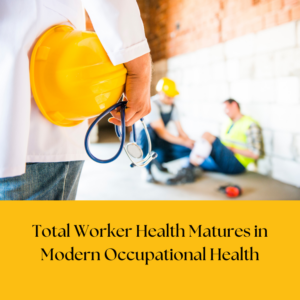Possible Causes Behind Decline in OSHA Worker Death Probes

Understanding the Decline in OSHA Worker Death Probes: Possible Causes and Implications
The Occupational Safety and Health Administration (OSHA) plays a crucial role in protecting workers by investigating fatalities and serious incidents in the workplace. However, recent data indicates a troubling decline in the number of worker death investigations conducted by OSHA. The trend raises significant concerns about worker safety, regulatory oversight, and the enforcement of federal safety standards in the U.S. This article delves into the potential causes behind the decline in OSHA worker death probes and explores the broader implications for both workers and employers.
Overview of OSHA’s Role in Worker Safety
Established in 1970 under the Occupational Safety and Health Act, OSHA’s mission is to ensure safe working conditions by setting and enforcing safety standards. This federal agency is responsible for investigating workplace accidents, with a particular emphasis on cases involving worker fatalities. OSHA’s investigations aim to identify the causes of accidents, hold employers accountable, and implement changes to prevent future incidents.
OSHA’s response to workplace deaths includes examining company policies, safety measures, training protocols, and industry practices. Each investigation provides insights that help prevent future accidents and reinforces the importance of workplace safety. When there is a decline in these investigations, questions arise about the factors contributing to this shift and the possible consequences for occupational safety.
Decline in OSHA Investigations: The Numbers and Concerns
Data from recent years shows a notable decrease in the number of death investigations OSHA conducts. According to reports, the agency investigated fewer worker deaths in recent years compared to prior decades. This trend is alarming, especially considering that certain industries—including construction, agriculture, and manufacturing—continue to report high injury and fatality rates.
This decline has raised concerns among worker advocacy groups, unions, and safety experts who worry that fewer investigations might signal a weakened commitment to worker safety. Several factors may be influencing this trend, ranging from budgetary constraints and staffing shortages to shifting enforcement priorities and the growth of certain high-risk industries.
Possible Causes Behind the Decline in OSHA Worker Death Probes
One of the primary reasons behind the decline in OSHA investigations is budget constraints. OSHA operates on federal funding, which has experienced limited growth despite inflation and increasing demands on the agency. With a budget that has remained relatively stagnant, OSHA faces significant challenges in hiring and retaining a sufficient number of inspectors.
Over the years, OSHA’s limited funding has translated into fewer inspectors on the ground. This shortage of personnel directly impacts the agency’s ability to investigate incidents thoroughly and in a timely manner, leading to a backlog in cases or, in some instances, decisions not to investigate lower-priority cases.
Inspector Shortages and Workload Increases
OSHA inspectors are responsible for overseeing thousands of workplaces across the country, yet the number of inspectors employed by OSHA has not kept pace with the growing workforce. In 1980, OSHA employed over 1,400 inspectors, but today, that number has fallen below 1,000. The reduction in personnel has forced OSHA to prioritize cases, often focusing only on the most severe incidents or industries with the highest risk of fatalities.
The inspector-to-worker ratio in the U.S. is considerably lower than the International Labour Organization’s recommended standards. This shortage means each inspector handles a larger workload, reducing the time and resources available for each investigation. Consequently, fewer death investigations can be conducted, and cases that are investigated may not receive the depth of scrutiny they require.
Changing Priorities and Regulatory Focus
Shifts in regulatory focus also play a role in the decline of OSHA death probes. In recent years, OSHA has been under pressure to focus on compliance assistance rather than enforcement. This shift prioritizes helping employers voluntarily comply with safety standards over strictly penalizing non-compliance. While compliance assistance can prevent accidents, it may reduce the emphasis on rigorous investigations and enforcement actions.
Moreover, OSHA has directed resources toward emerging risks, such as those associated with COVID-19, which strained its capacity to address other safety concerns. The pandemic required a significant redirection of OSHA’s resources to manage the crisis, potentially limiting its ability to conduct thorough investigations into other workplace fatalities.
Rise of Temporary and Contract Workforces
The increase in temporary and contract workers in various industries has introduced new challenges for OSHA. Temporary and contract workers are statistically more vulnerable to workplace hazards, often due to a lack of training and reduced safety oversight. However, investigating accidents involving these workers is complex, as multiple entities may be involved, including staffing agencies and third-party contractors.
These complexities can lead to difficulties in assigning accountability and determining which party is responsible for the investigation. With limited resources, OSHA may struggle to investigate incidents involving non-traditional workers thoroughly, which could contribute to the overall decline in investigations.
Industry Growth in High-Risk Sectors
Industries such as construction, warehousing, and transportation have grown significantly in recent years, each with a high risk of workplace accidents. The increase in demand for workers in these sectors has led to a higher number of reported injuries and fatalities. OSHA, however, has not proportionally increased its inspector count or budget to keep up with the rising demands of these high-risk sectors. Consequently, the agency may not be able to investigate every fatality in these fields, particularly if resources are stretched thin.
Legal and Political Challenges
Legal and political influences also play a role in OSHA’s operations. Changes in administration can bring shifts in labor policies and enforcement priorities. For instance, some administrations have placed an emphasis on deregulation, which can lead to fewer resources for enforcement agencies like OSHA. Political influences can also impact funding allocations, leaving OSHA with limited means to address its workload adequately.
In some cases, legal battles have delayed the implementation of new safety standards or limited OSHA’s authority, particularly in specific industries. Such limitations prevent OSHA from acting decisively in certain fatality investigations, potentially contributing to the overall decline in worker death probes.
Data-Driven Prioritization and Risk-Based Approach
OSHA increasingly relies on data to prioritize its inspections and investigations. Using a risk-based approach, the agency focuses on industries and workplaces with the highest risk of fatalities and injuries. While this method can maximize OSHA’s impact, it may mean that some cases are deprioritized, especially in sectors or incidents deemed lower-risk by statistical models. Although this approach helps allocate limited resources more effectively, it inevitably leads to fewer investigations in lower-risk areas, contributing to the overall decline in worker death probes.
Implications of Declining OSHA Investigations
Fewer OSHA investigations into worker fatalities could lead to reduced accountability for employers and potentially higher risks for employees. Investigations often lead to the identification of safety violations and the implementation of corrective actions. Without these probes, hazardous workplace practices may go unaddressed, increasing the likelihood of future incidents.
Diminished Deterrence for Non-Compliant Employers
OSHA investigations serve as a deterrent against unsafe workplace practices. The decline in probes may weaken this deterrent effect, leading some employers to deprioritize safety measures, especially if they perceive a reduced risk of penalties. This shift could ultimately undermine the progress made in workplace safety over the past few decades.
Potential Erosion of Public Trust
The decline in OSHA’s worker death investigations may erode public trust in the agency’s commitment to worker safety. Workers, advocacy groups, and unions expect OSHA to provide robust oversight and take swift action following fatalities. A noticeable reduction in death probes could lead to criticism from these groups and calls for reform, as they may perceive the decline as a lack of prioritization of worker safety.
Legal and Financial Repercussions for Businesses
While OSHA’s reduced investigative capacity may initially seem beneficial for businesses, it could lead to long-term legal and financial repercussions. In cases of serious accidents or fatalities, families and injured workers may pursue legal action if they feel OSHA has not provided adequate oversight. The absence of a federal investigation may lead to heightened scrutiny from state and local authorities, potentially resulting in legal liabilities for businesses.
Future Outlook: Strengthening OSHA’s Capacity for Investigations
Addressing the decline in OSHA’s worker death probes requires a multi-faceted approach. Increased federal funding is essential to hire additional inspectors and reduce the workload on current staff. Raising OSHA’s budget to meet the demands of today’s workforce could allow the agency to conduct more comprehensive investigations and prioritize worker safety more effectively.
Furthermore, strengthening partnerships with state agencies could help OSHA extend its reach. State-level occupational safety programs could share the burden of investigations, ensuring that critical cases receive the attention they deserve. Additionally, OSHA could benefit from enhanced data-sharing systems, allowing for real-time tracking of workplace injuries and fatalities and enabling a more proactive response to emerging safety issues.
The decline in OSHA worker death probes highlights a need for increased resources, strategic prioritization, and a renewed focus on worker safety. Understanding the factors behind this trend helps policymakers, employers, and the public recognize the importance of investing in workplace safety oversight. While budget constraints, inspector shortages, and shifting priorities have contributed to this decline, the need for a strong regulatory framework to protect workers remains crucial.
By addressing these challenges and reinforcing OSHA’s capacity to conduct thorough investigations, the U.S. can uphold the safety standards that protect its workforce, fostering a safer and more accountable work environment for all.











